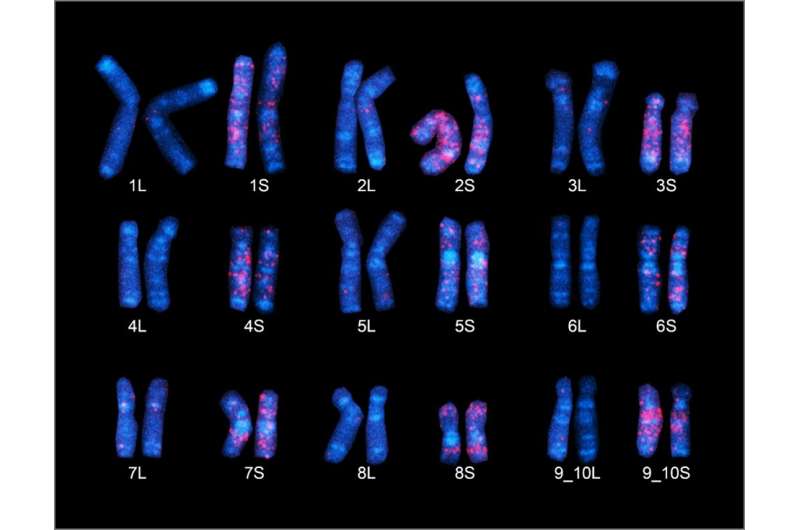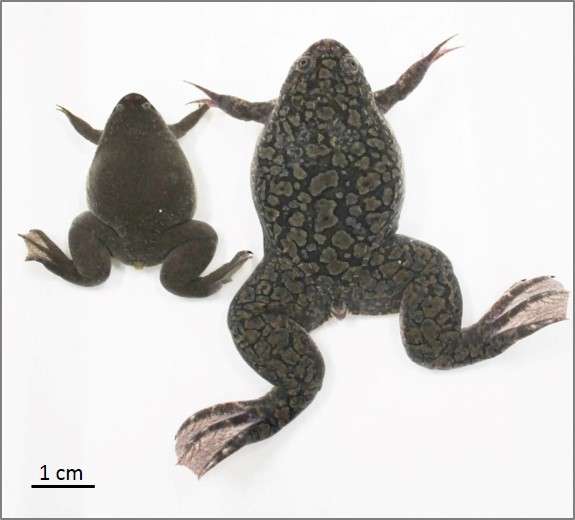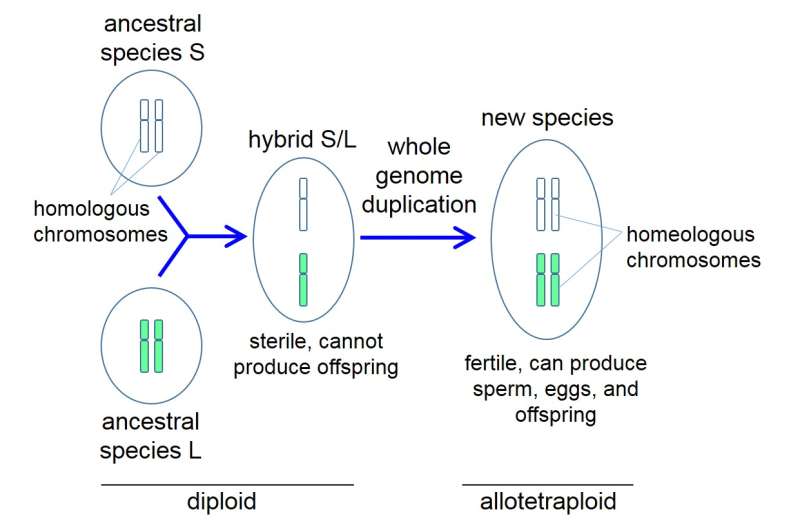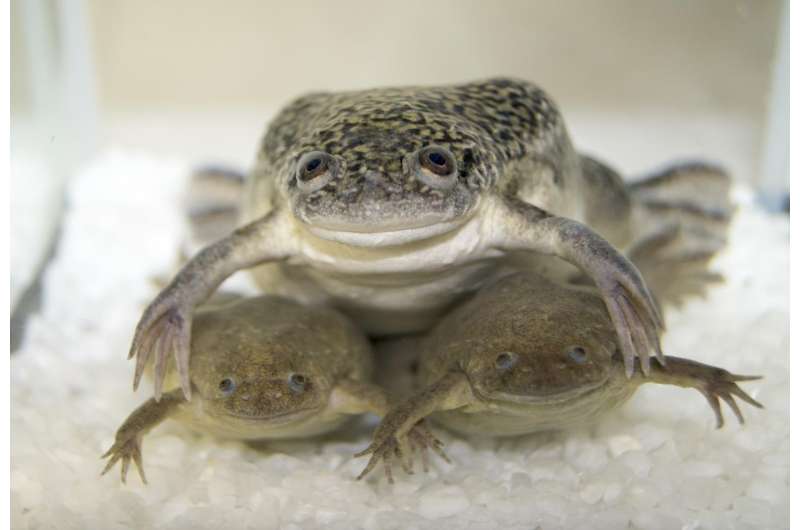How the African clawed frog got an extra pair of genes

The African clawed frog's ancestor inherited one set of chromosomes each from two different species and doubled its whole genome some 18 million years ago, according to an international research consortium led by Japanese and American scientists who sequenced the entire genome of the Xenopus laevis for the first time. Scientists hope that the finding will help our understanding of vertebrate evolution, as the vertebrate genome doubled twice 500 million years ago.
X. laevis is unusual in that it is a tetraploid species that has four sets of chromosomes, while many organisms, including humans, are diploid and have two sets of chromosomes. How and when this came about has been a topic of debate for some time.
One hypothesis is that the tetraploid X. laevis inherited one half of its genetic material from each parent when two diploid ancestral species mated, and the genome of this diploid offspring then doubled, giving rise to a tetraploid organism with twice the number of chromosomes as its ancestors.
"X. laevis is an essential organism for biological and biomedical research, but the sheer size and complexity of its genome made it difficult for scientists to sequence the genome in its entirety," says Associate Professor Masanori Taira, leader of the Japanese research team at the University of Tokyo. He continues, "He thought that sequencing the entire genome would not only be valuable for biological and biomedical research but also provide clues as to the origins of tetraploidy."
The researchers sequenced the entire genome of the J (Japan) strain of the frog inbred in Japan, in which the genetic codes inherited from the mother and father, respectively, are identical.

The US team led by Dan Rokhsar and Richard Harland at the University of California, Berkeley, used the shotgun method to sequence short fragments of DNA and piece them together like a puzzle. The Japanese team sequenced very long fragments of DNA and determined the location of the long DNA on the chromosomes. This extra step helped to distinguish the separate genome sequences inherited from each ancestral species.
"I thought that analyzing the 'transposable elements' (segments of DNA that move around the genome) that become fixed or inactive over time, might be one way of tracing the two ancestral genomes, present as subgenomes in X. laevis," says Taira.
He suggested this idea to his co-authors, Dr. Akira Hikosaka at Hiroshima University and Dr. Yoshinobu Uno at Nagoya University. They tested Taira's idea and discovered that indeed two sets of chromosomes originated from different diploid ancestors.

Curiously, the scientists also found that the subgenomes evolved separately in the nucleus, giving rise to shorter S and longer L types, the first evidence of animal subgenome evolution. The L type chromosomes preserved most of the ancestral genetic information, while the S type showed greater gene loss, deletion and rearrangement.
"Scientists believe that two rounds of whole genome duplication 500 million years ago contributed to the emergence of the first vertebrate species and an explosion of diversity in this group. We think our discovery will improve our understanding of this important event in our evolutionary history," says Taira.

More information: Adam M. Session et al, Genome evolution in the allotetraploid frog Xenopus laevis, Nature (2016). DOI: 10.1038/nature19840
Journal information: Nature
Provided by University of Tokyo



















